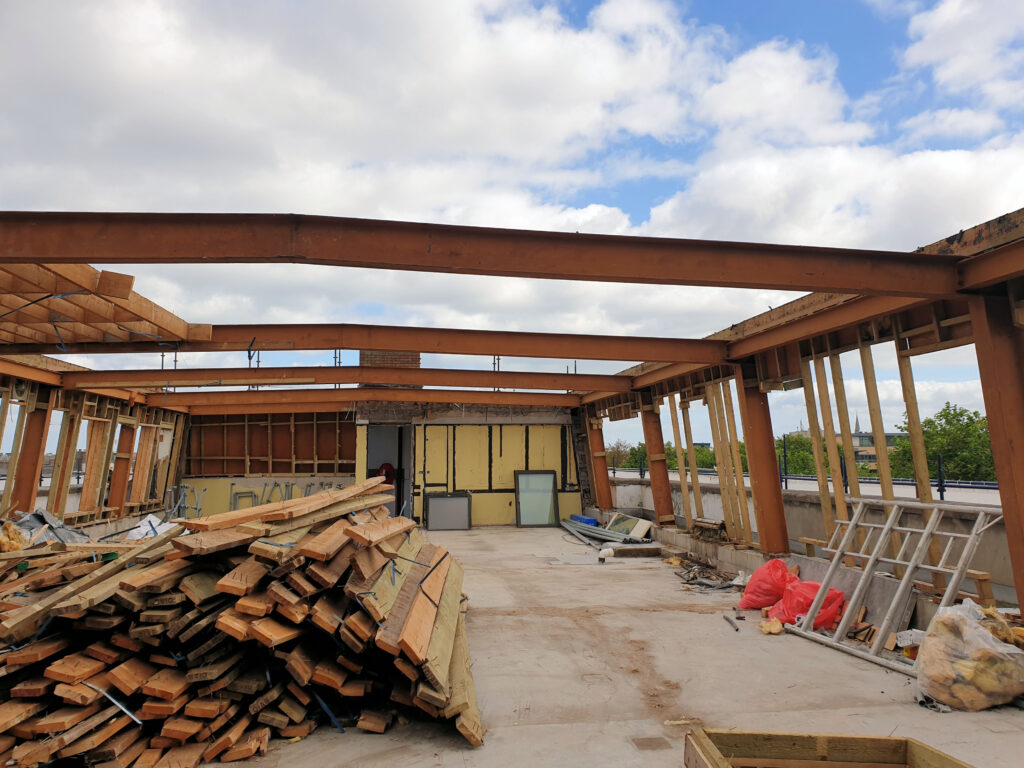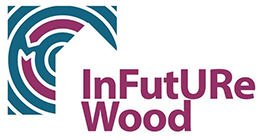Annette M. Harte and Daniel F. Llana from the National University of Ireland Galway and Elizabeth Shotton and St John Walsh from the University College Dublin answered five questions about the use and recycle of timber in Ireland.
Cover photo: Aughnanure castle, Oughterard, Co. Galway
Q1) What is the proportion of timber buildings in Ireland?
Prior to 1990, less than 1% of annual residential construction was undertaken using timber frame; however, by 2002, timber frame housing accounted for approximately 15% of the annual Irish housing output in Ireland1. This increased to almost 25% by 2004. In 2019, 5500 houses were built using timber frames2, which represents 27% of Irish new houses3.
1“timber frame housing 2002 consortium – Housing.gov.ie.” https://www.housing.gov.ie/en/Publications/DevelopmentandHousing/BuildingStandards/FileDownLoad%2C1669%2Cen.pdf. Accessed 9 Jan. 2020.
2“Irish Timber Frame Manufacturers Association (ITFMA)”. Personal communication.
3“Central Statistics Office (CSO)”. https://www.cso.ie/en/index.html. Accessed 4 Feb. 2020.
Monaghan shopping center, Co. Monaghan
Q2) Which materials are currently used?
The use of timber to construct a ‘whole’ building is rare in Ireland (primary structure and cladding); rather, an external masonry outer leaf is used in conjunction with a timber frame system to produce the prototypical Irish timber building.
External wall panels are constructed off-site using strength graded studwork, at vertical centres of between 400mm and 600mm, and ranging from 100x50mm up to 150x50mm cross-section sizes. Recently, there has been an increase in the use of double stud constructions to allow for more insulation (passive construction) and reducing the need for deeper studs. Wood-based board materials, typically OSB, are used on the external face of these panels for sheathing and wind bracing.
Floor framing can either be in solid timber joists, ranging in depth from 150mm to 250mm, yet increasingly engineered timber components such as I-joists and metal web joists are being used.
Roof construction can vary, depending on the allowance made for future expansion into the roof space. Cut truss roofs, constructed on-site typically use larger section sizes than prefabricated roof components such as trussed rafter or panel roofs.
Roof trusses from 1980s, Stillorgan, Co. Dublin
Q3) How is the market situation for recycled wood at the moment?
Currently, a market for recovered wood in Ireland does not exist with nearly all wood waste generated during construction and demolition (timber, furniture, packaging…) sent for chip production. There are three main end-uses for these chips: energy production in the UK, pallet blocks manufacturing and composting in Ireland. A very small amount of wood ends up in landfills. Wood products, such as floor finishes or joists, reclaimed from historic buildings are sometimes sold in limited quantities to salvage yards; however, due to the un-typical nature of the retailer (not a builders merchant), limited supplies of products and historic size pieces. There is potential market for reused timber products; however, this is not economic at present.
Thorntons wood recycling facilities, Fassaroe, Co. Wicklow
Q4) Which are the possibilities for reuse or recycling of timber?
Possibilities of recycling timber in new timber products depend on several factors: Dimensions, condition, amount of timber, segregation from other waste… It is easier to recover clean timber from old buildings (100 years or more) as large cross-sections for reuse, but few of this type of buildings are demolished in Ireland. Most of the buildings demolished nowadays are from the 1960s to 1980s when the construction techniques used make it difficult today to segregate timber. The roof timber structure and the stud walls are the easiest parts to recover good timber of medium and small cross-section that is suitable for recycling in mass timber products: Cross Laminated Timber and Glue Laminated timber.
Portumna castle, Co. Galway
Q5) What are the current demolition practices used in Ireland?
Perhaps unsurprisingly, current demolition practices in Ireland are entirely driven by the economics of the process yet there is a growing awareness in Ireland of the necessity to reduce construction and demolition waste.
At present, demolition practices aim to segregate as much material as possible at the early stages to reduce the generation of expensive mixed skip waste. As much demolition is undertaken by hand as possible as this allows for waste to be separated in a considered way and reducing contamination. Once the maximum amount has been removed by hand, the remained is typically removed mechanically.

Building under deconstruction by Hegarty in Dublin city center, Co. Dublin

